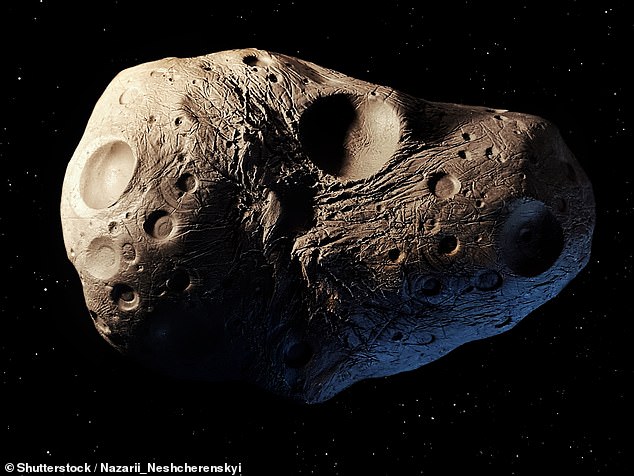When it comes to huge asteroids,the space rock that slammed into Earth and wiped out the dinosaurs 66 million years ago might spring to mind.
But this asteroid paled in comparison to another devasting rock,which rocked our Solar System four billion years ago.
Scientists have discovered evidence that an asteroid 20 times larger than the one that ended the age of the dinosaurs slammed into Jupiter's moon,Ganymede.
This impact was so vast that it shifted Ganymede's axis entirely,according to researchers from Kobe University.
While several questions about the incident remain,the researchers hope to finally get some answers when the European Space Agency's JUICE space probe visits Ganymede in 2034.

When it comes to huge asteroids,the space rock that slammed into Earth and wiped out the dinosaurs 66 million years ago might spring to mind (artist's impression)
In their new study,the researchers reveal that the asteroid likely had a diameter of around 186 miles,and created a huge crater between 870 and 994 miles in diameter.
'I want to understand the origin and evolution of Ganymede and other Jupiter moons,' Hirata added.
'The giant impact must have had a significant impact on the early evolution of Ganymede,but the thermal and structural effects of the impact on the interior of Ganymede have not yet been investigated at all.
'I believe that further research applying the internal evolution of ice moons could be carried out next.'
EarthJupiter